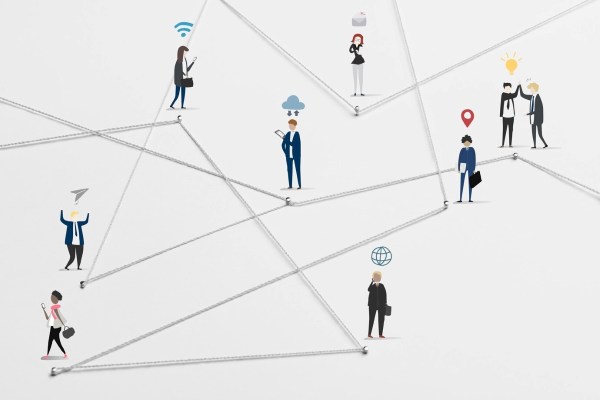Congress is on recess for the next five weeks and activities in D.C. have started slowing down. However, without having to recite the importance of the Internet for the economy, it is illustrative to have a room packed with members of the government, industry and leading IT experts at this time of the year. The high attendance at the event hosted by ITIF, in which the book “Code Halos: How the digital Lives of People, Things, and Organizations are Changing the Rules of Business” was presented, is just one more sign of the relevance of the topic. At this event, co-authors of this book, Malcolm Frank, Paul Roehirng, and Ben Pring discussed how new technologies, such as social media, mobile, data analytics, cloud computing and the Internet of Things (IoT) are characterized by new innovative ways to do business. Additionally, Larry Downes talked about his book, Big Band Disruption: Strategy in the Age of Devastating Innovation, and David Moschella focused on disruption in the marketplace and what the future trends to come will be. Two relevant questions that this event addressed were:
• What does this mean for traditional industry?
• What is the role of government in protecting consumers?
The term “disruptive innovation” includes products of daily use that include tablets, e-readers, smartphones, and their apps, which have changed the way we provide and receive information. And while many agree this is positive for the economy, it is necessary to understand the overall effects that disruptive innovation has for all industries and for society. This is the case of IoT, which is affecting not only the communications industry, but impacting all kinds of industries. The next thing to consider is how this collection of information is creating disruptive innovation in business. For instance, some firms that were market leaders in their sectors are being replaced by disruptive businesses; the transportation industry, for example, is being challenged by Uber. David Moschella pointed out that disruptive innovation is characterized by three main changes: increasing shift to Silicon Valley; increasing focus on attacking not only the technology sector, but diverse industry sectors; generating a higher degree of market concentration than it has ever seen before. Furthermore, the marketing industry is also changing; sales are generated by consumers selling to each other, said Larry Downes. These dynamics are going to continue and, according to panelists, no business has guaranteed its place in this dynamic environment.
Code Halos gives a name to the phenomenon that is transforming how people interact.” For instance, in the digital economy, sellers are dealing with two types of customers: a physical and a virtual person. The power of the Code Halo relies on the highly customize experience that some companies have already implemented.
To illustrate the power of Code Halos at the personal and industry level, Frank provided the following examples: at the personal level, music taste has become relevant for politicians to uncover the tendencies of voters. For example, Pandora figured out that if someone like Madonna and Beyonce that means they will vote Democrat. So this company has begun to sell customer data to political parties.
At the Industry level there is a very important transformation, where six companies are leading disruptive innovation: Apple, Amazon, Google, Facebook, Netflix, and Pandora have collectively generated more than a trillion dollars in market value in the past 10 years. “This has never happened in history.” These firms have figured out how to navigate and use the Code Halo and this phenomenon is just starting, Frank affirmed.
Regarding the role of the government in the new industry revolution panelists agreed that a light touch regulatory approach is preferred. Also, it is clear that technology is moving so fast that legislation will not keep up with its pace. For instance, one of the most important indicators of whether an industry is going to change quickly or slowly is its regulatory legacy, said Larry Downes. Industries with a traditional regulatory legacy that suffer disruptive innovation demonstrate a more dramatic transformation. For example this has been the case in the transportation and health industries.
Finally, within the realm of government and industry, the big policy question on privacy vs. security remains. In the eyes of the panelists the implications of this disruptive innovation will be something that policy makers will be dealing with for the next twenty years. As Paul Roehrig pointed out, countries around the world are trying to deal with this question by coming up with interesting solutions such as the right to be forgotten. “Disruption in the American context has lead to an important value creation, but when it comes to privacy it puts the breaks on this,” Frank said. Panelists agreed that the answer to this question should be the result of reliance on a market-based approach.
To summarize, disruptive innovation is transforming not only information-based industries, but also all types of industries. Furthermore, it is challenging traditional business models and allowing new entrants industries. Telefónica has recognized this and is taking a leading role through A Digital Manifesto. “While we recognized there are no easy answers as competition in this new digital economy and across the internet value chain is complex and evolving fast.” “We believe it would be crucial to have faster, smarter, more flexible, and lighter regulations, while ensuring fairer policy frameworks that apply to all innovators at the all levels across the value chain to accommodate these new business models.”












